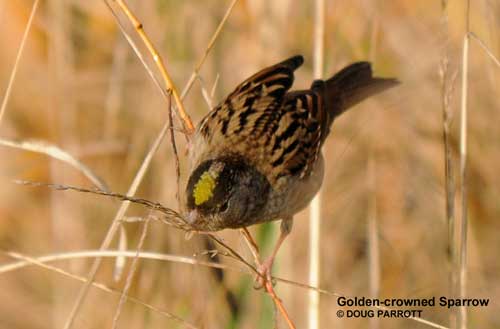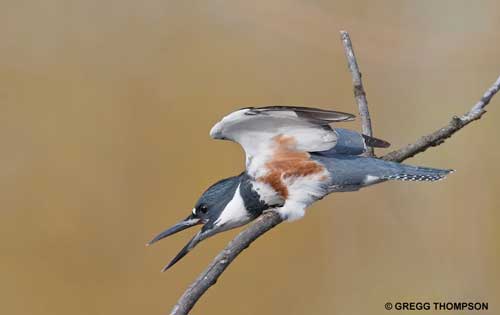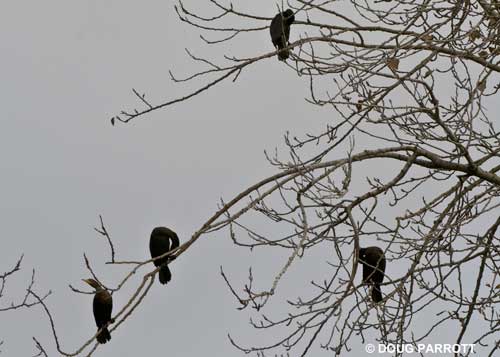The birds of the Fill are not avi-kingdom’s earliest risers. In fact, contrary to how all the field guides say birds should behave, ours do not spring up off their perches to greet the pre-dawn with a chorus of songs and perky cheeps. With the exception of a few over-eager robins and the occasional gung-ho wren, Fill birds can’t even seem to muster a grumpy squawk in the dawn’s early light. They prefer to sleep in.
I can sympathize. While I do usually get up before dawn, I am not an early-morning get-out-of-the-houser. The heater is too cozy, the coffee too hot. The Times crossword calls to me, and all too frequently I answer. It’s hard to face the cold, dank chill of a Seattle winter. Much easier to spread an afghan over my lap, pull out the footrest of my Barca-lounger, and lean back in total comfort. Ah, civilization.
But then I start to hear a little voice in my head. It belongs to Ricky Young, famous Washington surfer. He is saying, “If you do nothing, nothing happens. If you do something, something happens.” His voice echoes Debra Shearwater’s, that pelagic birder par excellence. She begins to chant, “If you snooze, you lose.”
Right. Birds have flown to the Fill in the night. There is no telling what might await me. Time to force myself to hit the trail. I lower the lounger and put away the paper. I need to see.
If my friends’ voices manage to blast me out of the house before dawn, I am treated to sights so celestial they make the world look as if heaven itself had descended to visit the earth for a short time. The sun, too delicate to glare from on high, shines a soft glow of pale gold over the land. The waters of the Cove smoke with mist. Each blade of grass is beaded with diamond drops, each stone on the path casts a soft shadow.
As I walk toward the shore, the world gradually wakes up. A Red-tailed Hawk shakes her feathers, spreads her wings, and glides over the field. The sparrows who have been gathering the grass seeds in the field around the Lone Pine Tree for the past few weeks begin to arrive. They eye me warily when I set down my camp stool, but after a little while, they allow me to join the flock. It is so still, I can hear their little feet scrape against the grass as they search for seeds. It is a crackly, homey kind of sound, very comforting to the ear.
The sparrows’ busy work reminds me of the times I used to join my mother in the kitchen before the rest of the family woke up. She would bustle around making lunches, getting breakfast ready, clearing the last of the dishes out of the sink. She let me sit there as she worked, giving me the great gift of feeling cared for. It is a feeling the flock grants me in the dawn, before the rest of the world wakes up.
May the Fill similarly bless you and keep you this day.



